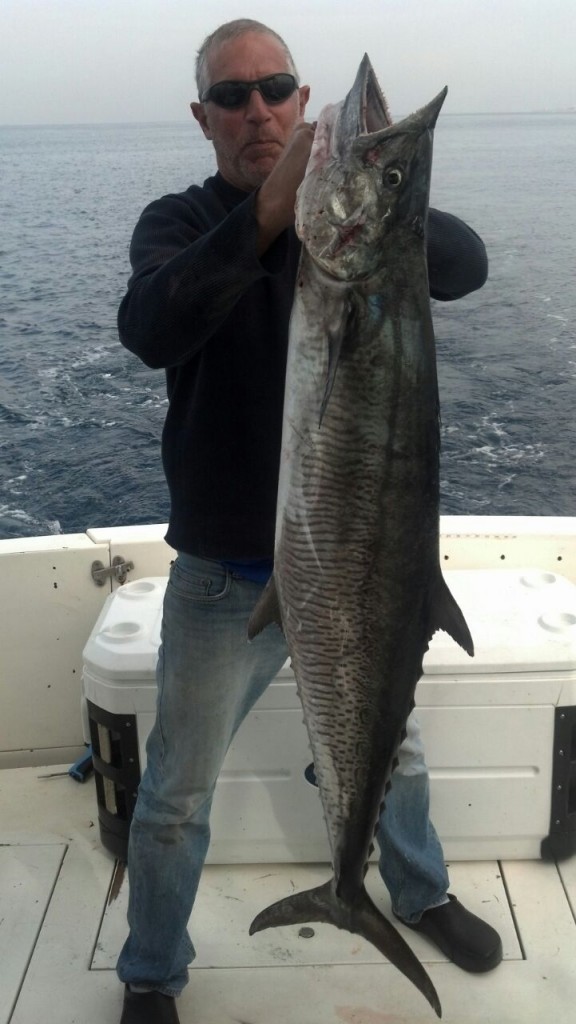
King Mackeral in Mediterranean takeover bid
When the so relegated laborers starting digging the Suez Canal by hand, they had no idea they would be facilitating the migration of so many fish species, into the Mediterranean.
This excerpt describes the beginning days of the Suez Canal, it’s from http://www.history.com/this-day-in-history/suez-canal-opens
“In 1854, Ferdinand de Lesseps, the former French consul to Cairo, secured an agreement with the Ottoman governor of Egypt to build a canal 100 miles across the Isthmus of Suez. An international team of engineers drew up a construction plan, and in 1856 the Suez Canal Company was formed and granted the right to operate the canal for 99 years after completion of the work.
Construction began in April 1859, and at first digging was done by hand with picks and shovels wielded by forced laborers. Later, European workers with dredgers and steam shovels arrived. Labor disputes and a cholera epidemic slowed construction, and the Suez Canal was not completed until 1869–four years behind schedule. On November 17, 1869, the Suez Canal was opened to navigation. Ferdinand de Lesseps would later attempt, unsuccessfully, to build a canal across the Isthmus of Panama.
When it opened, the Suez Canal was only 25 feet deep, 72 feet wide at the bottom, and 200 to 300 feet wide at the surface. Consequently, fewer than 500 ships navigated it in its first full year of operation. Major improvements began in 1876, however, and the canal soon grew into the one of the world’s most heavily traveled shipping lanes.”
And so two very separate bodies of water, were joined. It was back in 1935 that our King Mackerel was first recorded in the Med – on the Egyptian Coast, where they seemed to flourish. These migrating fish that followed the Suez into the Med, were aptly named after the canal builder himself, and are called Lessepsian migrators. There are many, up to 59 or so, of these travelling fishburry types, enjoying the comforts of the Med these days.
When David Kosta in Israel sent me photos of huge king mackerel taken on my MYDO Baitswimmers, I was completely dumbfounded. But there it is – we can go ‘couta fishing in the Med, when our fish run out!

Chatting to fishing traveller Aviv Hayun in the Cape recently, really blew my mind even more – they catch amberjack, bluefin tuna and king mackerel off the side and only a few metres out?! Aviv swims his baits (live squid) out there and says that invariably by the time he gets back to his rod he is ‘vas’! He just takes one fish each time. The drop-offs are steep and a good cast can put you in 20 metres of water quite easily.

Unfortunately, Aviv reports that the nets are out for this beautiful eating and selling fish now in the Med…and that regulation is nigh non-existent. He reckons that as soon as someone catches a few nice ‘couta, the word gets out and the next day the bay is full of gill and purse netters hauling the shoal out?! At least the Chinese aren’t there. Yet.
Another complication that has been spurned by the king mackerel’s invasion, is competition for food in the Med. Which is like a huge estuary really, amd quite finite. The Walla-Walla as we know them in South African waters, or, the largehead hairtail (also beltfish), Trichiurus lepturus, is a member of the cutlassfish family, Trichiuridae and it is an important food fish in the east. And eats much the same as the king mackerel, but they are also the best baits for catching king mackerel. So they may come under threat, but I am sure the king mackerel are a lot more fun to eat than the Walla-Walla, when the smoke finally clears.
Stay in touch with us via Facebook…
